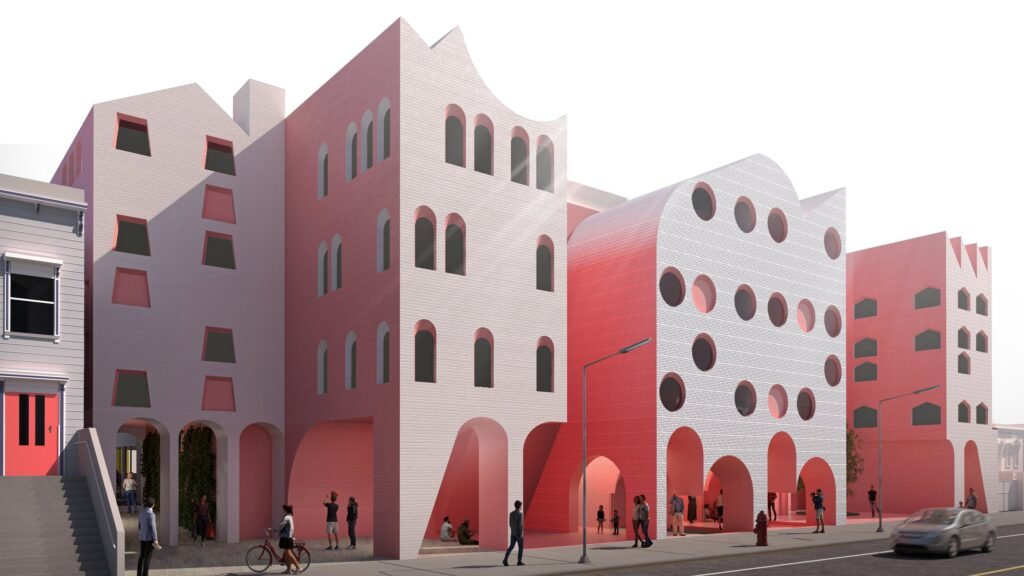When we think of construction, we picture bricks, mortar, and steel beams. But the true impact of a building goes far beyond its physical structure. The way a space is designed influences how we feel, think, and even behave. From the height of a ceiling to the placement of windows, every design decision can affect mental well-being, productivity, and social interaction.
For homeowners, businesses, and developers in Kent, understanding the psychology of design is just as important as structural integrity. A well-designed space can uplift moods, boost efficiency, and foster a sense of community, while a poorly planned one can create stress and discomfort.
So, how do Kent’s top builders use design to shape emotions and experiences? And what should you consider when creating a space that feels as good as it looks? Let’s step beyond the brick and explore the invisible forces at play.
Contents
- The Science of Space: How Buildings Affect Our Minds
- Light, Colour, and Mood: The Subtle Influences of Design
- Layout Matters: The Psychology of Open vs. Closed Spaces
- Building for Well-being: What Kent Builders Are Getting Right
- FAQs: The Psychological Side of Construction
1. The Science of Space: How Buildings Affect Our Minds
Ever walked into a room and immediately felt at ease? Or stepped into an office that made you feel strangely on edge? That’s no accident. The built environment has a direct impact on mental health and cognitive function.
According to the UK Government’s Building Better, Building Beautiful Commission, well-designed spaces improve well-being, while poorly designed environments contribute to stress and social isolation. Factors such as layout, lighting, acoustics, and materials all play a role in shaping our experiences within a space.
Key psychological impacts of design include:
- Spatial perception – Large, open spaces create a sense of freedom, while cramped areas can trigger anxiety.
- Cognitive function – Thoughtfully designed environments can enhance focus and productivity, especially in workplaces.
- Emotional response – Natural materials and harmonious layouts promote relaxation, while chaotic designs can increase stress.
Kent’s builders are becoming increasingly aware of these effects, incorporating principles of biophilic design, ergonomic planning, and sensory balance into their projects.
2. Light, Colour, and Mood: The Subtle Influences of Design
Light and colour are two of the most powerful design elements influencing psychology.
- Natural light boosts mood, productivity, and sleep quality. A study by the Health & Safety Executive (HSE) found that well-lit workspaces reduce stress and absenteeism.
- Warm colours (reds, oranges, yellows) can energise and stimulate social interaction, making them ideal for kitchens and communal areas.
- Cool colours (blues, greens) have a calming effect, perfect for bedrooms and relaxation zones.
- Neutral tones provide balance and are often used in professional settings to create a sense of stability.
Kent’s most forward-thinking builders maximise natural light through strategic window placement, skylights, and open-plan designs—helping homeowners and businesses enjoy brighter, more inviting spaces.
3. Layout Matters: The Psychology of Open vs. Closed Spaces
One of the biggest debates in modern architecture is whether open or closed spaces are better. The answer? It depends on the purpose of the building.
| Space Type | Psychological Impact | Best Uses |
| Open-Plan | Encourages social interaction, collaboration, and a sense of freedom | Kitchens, living rooms, offices |
| Closed Spaces | Enhances focus, privacy, and security | Bedrooms, meeting rooms, study areas |
| Hybrid Design | Balances social and private needs, offering flexibility | Modern homes, co-working spaces |
Kent’s builders are increasingly blending open and closed concepts, using zoning techniques, adding space saving loft conversions as well as partial walls, glass partitions, and multi-purpose rooms to strike the perfect balance.
4. Building for Well-being: What Kent Builders Are Getting Right
The best building companies in Kent don’t just create structures; they craft experiences. Some of the latest trends shaping construction in the region include:
- Biophilic Design – Incorporating natural elements like wood, stone, and plants to reduce stress and improve air quality.
- Acoustic Considerations – Using soundproofing materials and intelligent layouts to control noise levels, particularly in urban areas.
- Smart Lighting – Installing adaptive lighting systems that change throughout the day to support natural circadian rhythms.
- Sustainable Materials – Choosing eco-friendly materials that not only benefit the environment but also create a healthier living space.
With an increasing emphasis on well-being, Kent’s builders are proving that construction is as much about the mind as it is about the materials.
5. FAQs: The Psychological Side of Constructio
1. How does design affect productivity?
A well-lit, organised, and spacious environment can enhance focus and efficiency, making workplaces and home offices more effective.
2. Can a poorly designed home increase stress?
Yes! Poor lighting, lack of privacy, and inefficient layouts can contribute to frustration and anxiety, while good design promotes relaxation and ease.
3. Why do some buildings feel ‘cold’ and uninviting?
Lack of natural light, harsh materials, and unbalanced proportions can create a sterile or impersonal atmosphere. Smart design can counteract this.
4. Do open-plan homes really improve social interaction?
Yes and no—while open spaces encourage interaction, they can also reduce privacy. The best designs include flexible zoning to balance both needs.
5. Are Kent’s builders adapting to these psychological principles?
Absolutely. Many local builders now prioritise light, space, and well-being, ensuring homes and workplaces support a healthier lifestyle.
Conclusion: More Than Just Walls and Roofs
Buildings aren’t just spaces; they’re experiences. Whether it’s a home designed for relaxation, an office built for productivity, or a community space meant to bring people together, the psychology of design plays a crucial role in how we feel and function.
Kent’s builders are moving beyond traditional construction methods, embracing the principles of well-being and human-centred design. The result? Spaces that don’t just look good—but feel good too.

